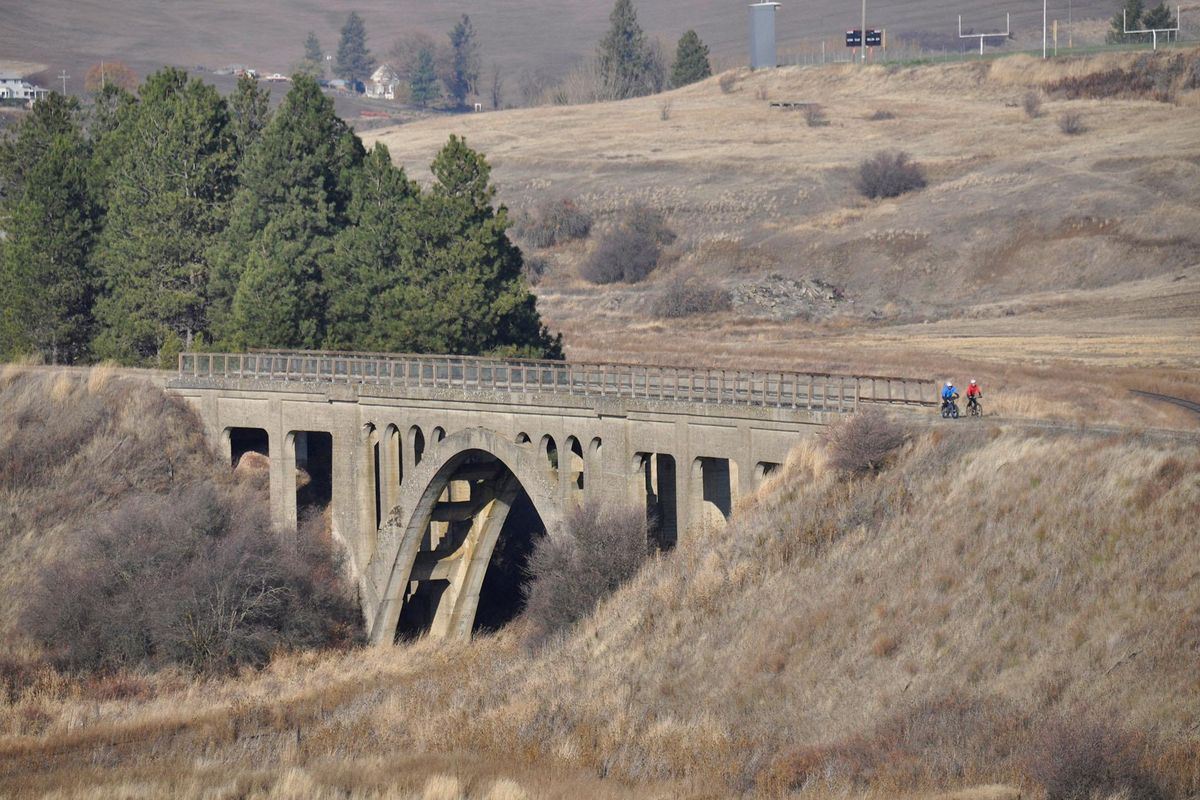Getting There: Rails-to-Trails idea joins Washington, Washington, D.C.

When Thomas Jefferson gave his first inaugural address in 1801, he described the U.S. as having “room enough for our descendants to the hundredth and thousandth generation.”
Three years later, he sent Meriwether Lewis, William Clark and the Corps of Discovery west to survey the continent, one of many objectives. The company left Illinois and 18 months later reached the Pacific Ocean.
By the end of the century, a trip from New York City to San Francisco took just three and a half days aboard the Transcontinental Express railroad. Now, of course, that trip takes just a few hours aboard an airliner.
All of this is to say, the U.S. is a large country, and since its earliest days, Americans have been trying to get across it in any way possible. And we’ve gotten awfully quick about it.
Now there’s a new way being hatched, one involving abandoned railway corridors, some big dreams and a desire to go much slower.
The Rails-to-Trails Conservancy has hatched a plan to create a “safe, seamless and scenic pathway” connecting Washington state to Washington, D.C. As the group’s name suggests, it will rely on abandoned rail corridors to create the trail, which will pass through 12 states and D.C., and will run within 50 miles of 50 million people.
Since its founding in 1986, the group has helped create 31,000 miles of trails, harboring the dream of one of its founders, David Burwell, for a “Great American Rail-Trail.”
“My dream is that one day you could go across this entire country – old or young, handicapped or able – on flat, wide, off-road paths,” Burwell said in 2006, according to his Washington Post obituary in 2017. “I want rail-trails to be America’s main street.”
That main street already exists in the Inland Northwest, but its quality is far from ideal or consistent.
In Washington state, the group sees the 285-mile Palouse to Cascades Trail as the national trail’s western terminus. The trail formerly known as John Wayne is not in great shape. Having the trail cross most of the state is something to be lauded, but its deep dust, missing bridges and that feeling you’re trespassing aren’t the obstacles most travelers seek.
The Trail of the Coeur d’Alenes makes up the Idaho segment of the trail. If the entire national trail is anything like this 72-mile jewel, which skirts Lake Coeur d’Alene before heading across the Panhandle toward Wallace and Mullan, then consider its future very bright.
Some of the toughest segments to build are already complete. The 185-mile Chesapeake & Ohio Canal National Historical Park trail connects D.C. to Cumberland, Maryland. The Ohio to Erie Trail runs 270 miles from Cincinnati to Cleveland.
The idea for a continental trail was revived because the completed segments now make up more than half the envisioned trail, triggering the work of the conservancy’s new campaign, according to an article on Route Fifty.
“We’re confident that this is something we can do,” Kevin Mills, senior vice president of policy for the group, said in the article. “It will take some effort over a period of years to bring it together, of course.”
This isn’t some pipe dream, Mills said, but came after 18 months of analysis and discussions. If and when it’s done, it’ll be nothing short of a miracle. Then again, Jefferson probably never imagined flying from New York to San Francisco.
STA seeks input on Central City Line
As the Spokane Transit Authority gets closer to bringing the Central City Line to town, it wants to hear from you.
The streetcar-like electric bus will connect Spokane Community College with the Browne’s Addition neighborhood through downtown, and transit officials plan to receive $53.4 million in federal Small Starts grant funding this year to help finance the project. The funding would cover nearly three-quarters of its cost.
To take the survey, visit arcg.is/1Wfi4v.